1. Introduction
Nowadays, along with rapid technological development and the informational revolution, the expansion of the Internet has made online shopping one of the most convenient and vital ways of shopping for people. While people from nearly all age groups unhinderedly utilize this handy accessibility, there is one excluded group, yet an indispensable and sizeable part of our society, that makes up the minority of online shoppers—the elderly. Their significance is explicitly demonstrated by the aging tendency of China, where the population of 60+-year-old people reached a striking number of 264,018,766 in 2020, which increased an exceptional 48.62% compared to the statistics ten years ago, eventually taking up 18% of the overall population [1], according to the official data released by the National Bureau of Statistics of China. But despite their large population, the elderly receive far less attention than active youngsters, resulting in a serious information gap. Many of the elderly acknowledge very little about newly launched sales platforms and novel sales methods, which are influenced by numerous background factors to varying extents. Therefore, gaining further insight into this rarely explored and inquiry-worthy field seems to be of great importance to the researcher. The researcher hopes that this research could not only arouse social concerns in the elderly but also uncover consumption patterns that could potentially assist future researchers.
This study, related to Marketing, Platform Economics, and Econometrics, aims to exploit the pattern of the relationship between different sales methods and platforms and elderly online shopping choice-making, discover the alternative minor causes that affect the elderly’s virtual shopping amount, and propose feasible advice or resolutions to improve or solve the current problem. The research range of this study is categorized into four main parts: the elderly, sales methods, sales platforms, and other factors influencing elderly online shopping. Firstly, the researcher defines “the elderly” as people aged 60+. Secondly, the researcher focuses on four classifications of sales methods: online advertising, public relations, sales promotion, and site promotion. Moreover, the six sales platforms that the researcher intended to research are Taobao, Jingdong, TikTok, Kuaishou, Xiaohongshu, and Bilibili. The researcher grouped these six platforms into three groups, which include Taobao and Jindong (well-established image & text stores dominated), TikTok and Kuaishou (established livestream store dominated), and Xiaohongshu and Bilibili (newly set up). Lastly, other factors influencing elderly online shopping include age, education, inclusivity, income, and so on. After clarifying this research range, the researcher hypothesized that among all sales methods, the effectiveness of elderly online shopping from high to low is sequentially sales promotion, public relations, online advertising, and site promotion. Furthermore, among all sales platforms, the most used platforms are successively Taobao, Jingdong, TikTok, Kuaishou, Xiaohongshu, and Bilibili.
2. Literature Review
2.1. Former Research
Due to the researcher’s interest in the research topic, she browsed the Internet for vital keywords: sales platforms and methods. The recognition of a “sales platform” is not knowledge-demanding, counting on the fact that we could easily name many of them judging from our daily experience. However, the myriad and diversified “sales methods” may be challenging to categorize. Thus, the researcher segregated them into online advertising, public relations, sales promotion, and site promotion. Online advertising mainly refers to the operational advertisement publicity of a product or service, and because of its broad audience scope and spatial free restriction, it has become one of the most important sales methods. Public relations are the act of establishing good social relations with enterprise stakeholders and creating a good marketing environment for enterprise managers. A practical use of this could be the promotion of a product, brand, or service on any of the online platforms. Sales promotion deepens customers' understanding of the enterprise itself and its products and helps customers form a favorable impression of the products in a short period of time. The “get it free” method on Double Eleven is a demonstrative example of this. Site promotion is the enterprise carrying out marketing activities on a specific site on the Internet, attracting large numbers of visitors. The enterprise usually promotes its site by optimizing website content and services to engage consumers [2].
There are also other researches based on different factors that might affect the elderly’s online shopping behavior or may be implicitly contributing to it. Firstly, in a 2019 research, the author stated that cognitive level has a positive impact on users' willingness to participate, while it has a negative impact on their motivation to comment. This may be because when users' cognitive level is improved, they will feel that participating in comments will cost them more execution costs, thus inhibiting their motivation to comment or willingness to interact [3]. Secondly, the author of a study focusing on elderly smartphone usage argued that most elderlies possess the need to learn online shopping and electronic payment, making the extent to which smartphones are used a hidden factor that contributes to elderly online shopping. The author also pointed out that the economic level (in other words income level), education level, and health status are impacting factors on the low smartphone usage among elderlies. Thirdly, the sense of social presence stimulated by interactivity promotes the purchase intention of consumers [4], meaning that actively interacting, or posting comments on sales platforms may positively influence the willingness of consumption. Fourthly, it was put forward that the consumer’s perceived usefulness of a product influences his or her purchase intention more strongly than the sales promotion of that method [5]. Fifthly, the return and exchange of goods may have a negative impact on online shopping attitudes, but the impact is not significant [6]. Sixthly, research specializing in the elderly’s online shopping capabilities suggested that the digital capability of elderly online shopping is generally strong, but there are still weaknesses, whose cause is mainly reflected in the level of education. It was said that differences in the digital purchasing ability of the elderly who received varying levels of education are significant, and the elderly with higher education have stronger digital shopping abilities [7]. Seventhly, based on demographic characteristics and consumption habits, online consumers who are male, have higher education, spend more time online, shop online more often, and spend more money each time tend to have a better perception of product usefulness and security control [8]. Lastly, male users tend to be more active than female users in all online forums researched, but female users require higher-quality content [9].
2.2. Uniqueness and Focus
Although seemingly abundant, former research is greatly limited because of their specialized research directions and therefore lack comprehensiveness. Moreover, most of the research targeted studying the online consumer group as a whole but did not focus their attention on the elderly. They also can’t provide answers that the researcher wants to resolve, such as what specific sales method or platform boosts the specific elderly group’s consumption to the greatest extent and the underlying factors behind them.
Thus, this study that the researcher conducts has never been researched before, and it combines two relevant research tracks—online shopping and sales and the elderly consumer group—to form brand-new research. Additionally, by including a wide variety of underlying minor factors that affect elderly online shopping and focusing on contrasting platforms with similar sales methods (live streaming dominated or store selling dominated) and different features (for example, time and extent of establishment), the uniqueness and focus of this research can be explicitly demonstrated.
3. Data and Methodology
3.1. Participants and Sampling Strategy
After conducting the previous literature review, the researcher designed and released a questionnaire on her social media, which collected a total sample size of 156, within which 141 were valid answers. The researcher implemented a specialized logic design in the study. The questionnaire designed comprised three evaluation questions regarding the elderly participants: whether they were alive, whether they used mobile phones, and whether they used the Internet. If a participant's response fails to provide meaningful data (e.g., the elderly person had passed away or did not use mobile phones or the Internet), that participant’s questionnaire will be terminated at that point. Consequently, subsequent questions in the survey remained unanswered, marked as "omitted" (designated by -3). This approach acknowledged the possibility of a decreasing number of responses as participants progressed through the questionnaire. Additionally, there is no participant selection process and people from all age groups were welcome to answer, but the target object of the survey was the elderly, which means if the questionnaire responder wasn’t the elderly himself/herself, he or she would have to answer the survey questions based on his or her family elder, whether it is the parent generation or grandparent generation. For instance, respondents aged 0 to 29 years old replied to the survey according to their grandparents’ everyday reality, while respondents aged 30 to 59 years old did so by referring to their parents. Eventually, to statisticize by the five age group classifications, of the 141 credible responses, 27 are aged younger than 18, 60 are aged younger from 18 to 29, 9 are aged younger from 30 to 39, 12 are aged younger from 40 to 59, and 33 are aged at least 60. Moreover, responses from all over China were successfully collected except for 10 provinces.
3.2. Data Collection Procedures
Data collected in this research come from the questionnaire survey and one-on-one interviews. The results of the questionnaire were gathered through the application Wenjuanxing, and the answers to the interviews were recorded by the researcher. What cannot be neglected is that the responses of the two interviewees, a man and a woman who were both aged 75, were also included in the questionnaire survey. In order to fortify sample quality and reliability, the researcher disposed of samples that were of polarized speediness and abandoned those with futility. For example, the sample of participants that chose “passed away” for both of the elderly’s health conditions were discarded, since presumably, they could not provide valid information concerning the elderly’s online shopping preferences right now. The researcher exported an Excel of all the data and imported them into the computing application Stata for further analysis.
3.3. Variables and Measures
The researcher aims to delve into how sales platforms and methods affect elderly online shopping, therefore making sales platforms, including Taobao, Jingdong, TikTok, Kuaishou, Xiaohongshu, and Bilibili, and sales methods, online advertising, public relations, sales promotion, and site promotion, two main variables of this research. There are also minor factors that may represent the causes of those observed phenomena, and they are gender, health condition, education, self-viewed phone importance, online shopping expenditure, online shopping frequency, online activeness or inclusivity, and personal income. The researcher also measured the validity of the variables by referring to the r-squared value and the confidence interval revealed in the regression model.
3.4. Data Analysis Techniques
Firstly, when analyzing the principal variables—sales methods and platforms—the researcher adopted the comprehensive sorting calculation. Benefited from data representing both sequence and frequency in the survey, the researcher calculated a comprehensive score for each of the platforms and methods included using this formula:
\( \frac{(∑frequency×weight)}{\ \ \ of total answers received} \)
The weight is determined by the position in which the options are arranged. In the sales platform case (6 options participating in sorting), for example, the weight of the first position is 6, the weight of the second position is 5, and the weight of the sixth position is 1. The same goes for sales methods positioning. The higher the comprehensive sorting score, the greater the impact the variable has on the assumption. By doing so, the researcher could easily logically sort and point out the sequence of which of these platforms or methods played the biggest part in elderly online shopping.
Secondly, the researcher adopted regression analysis to minimize total error, “estimate the effect of some explanatory variable on the dependent variable” (Kellogg School of Management, Northwestern University), and draw conclusions concerning the credibility of the database by using this formula:
\( {Υ_{i}}={β_{0}}+{β_{1}}{χ_{1i}}+{β_{2}}{χ_{2i}}+{β_{n}}{χ_{ni}}+…+{u_{i}} \)
Furthermore, another approach that the researcher employed is descriptive analysis. By summarizing collected data from all manner of aspects, the researcher was able to attain a holistic view of the data distribution, tendency, and so on. Namely, a crucial part of descriptive analysis is the correlation coefficient relation, demonstrated by this formula:
\( r=\frac{\sum _{i=1}^{n}({χ_{i}}-\bar{χ})({y_{i}}-\bar{y})}{\sqrt[]{\sum _{i=1}^{n}{({χ_{i}}-\bar{χ})^{2}}\sum _{i=1}^{n}{({y_{i}}-\bar{y})^{2}}}} \)
Lastly, inferential analysis is of great significance in this study, making causal inferences that greatly contributed to the researcher’s pattern and conclusion forming.
3.5. Ethical Considerations
Before the questionnaire answering began, the researcher meticulously informed the participants of her personal background and promised solemnly on confidentiality and privacy, which means participants who answered the survey had consented to the researcher. Plus, by referring to the Research Method by City University of Hong Kong, 2024, the researcher ensured that the research adheres to ethical guidelines and standards.
4. Empirical Results
Since the questionnaire survey in this research was designed to be answered by five different age groups, the researcher decided to adopt a classification discussion, which means except for the samples that are answered by the elderly themselves, the others are consolidated by gender of their family senior that they are referring to.
4.1. Comprehensive Sorting Calculation
In the elderly self-answered samples, we can see that with a comprehensive score of 4.11, Taobao ranked first among the most frequently used sales platforms, followed successively by Jingdong (3.41), TikTok (1.48), Kuaishou (1.07), Xiaohongshu (0.3), and Bilibili (0.15). Turning to the most frequently used way of shopping, the elderly show a significant propensity for in-store shopping, scoring 3.93, with livestream shopping (1.89), asking the younger generation to purchase (1.15), WeChat Business shopping (0.67), and asking friends to help purchase (0.52), ranking next.
Table 1: Comprehensive sorting calculation on the elderly’s most frequently used sales platforms
Platform | Comprehensive Score | First Pick | Second Pick | Third Pick | Forth Pick | Fifth Pick | Sixth Pick | Subtotal | Taobao | 4.11 | 16 (84.21%) | 3 (15.79%) | 0 (0%) | 0 (0%) | 0 (0%) | 0 (0%) | 19 | Jingdong | 3.41 | 7 (38.89%) | 7 (38.89%) | 3 (16.67%) | 1 (5.56%) | 0 (0%) | 0 (0%) | 18 | TikTok | 1.48 | 2 (25%) | 4 (50%) | 2 (25%) | 0 (0%) | 0 (0%) | 0 (0%) | 8 | Kuaishou | 1.07 | 2 (28.75%) | 0 (0%) | 2 (28.57%) | 3 (42.86%) | 0 (0%) | 0 (0%) | 7 | Xiaohongshu | 0.3 | 0 (0%) | 0 (0%) | 0 (0%) | 0 (0%) | 4 (100%) | 0 (0%) | 4 | Bilibili | 0.15 | 0 (0%) | 0 (0%) | 0 (0%) | 0 (0%) | 0 (0%) | 4 (100%) | 4 |
Table 2: Comprehensive sorting calculation on the elderly’s most frequently used way of shopping
Sales Method | Comprehensive Score | First Pick | Second Pick | Third Pick | Forth Pick | Fifth Pick | Subtotal | In-store Shopping | 3.93 | 17 (73.91%) | 4 (17.39%) | 1 (4.35%) | 1 (4.35%) | 0 (0%) | 19 | Livestream Purchase | 1.89 | 7 (63.64%) | 4 (36.36%) | 0 (0%) | 0 (0%) | 0 (0%) | 18 | Asking Younger Generation to Purchase | 1.15 | 2 (25%) | 4 (50%) | 1 (12.5%) | 1 (12.5%) | 0 (0%) | 8 | WeChat Business Shopping | 0.67 | 0 (0%) | 1 (14.29%) | 4 (57.14%) | 0 (0%) | 2 (28.57%) | 7 | Asking Friend to Purchase | 0.52 | 1 (16.17%) | 0 (0%) | 1 (16.67%) | 2 (33.33%) | 2 (33.33%) | 4 |
In the samples answered by the elderly’s son and daughter generation that features male elderly shopping behaviors, we can see that with a comprehensive score of 5.5, TikTok ranked first among the most frequently used sales platforms, followed successively by Jingdong (2.5), Kuaishou (2), Taobao (1.5), Bilibili (1), and Xiaohongshu(0). Turning to the most frequently used way of shopping, the sons and daughters point out that male elderly show a propensity for livestream shopping, scoring 3.5, with in-store shopping (2.5), asking the younger generation to purchase (0.75), WeChat Business shopping (0), and asking friends to help purchase (0), ranking next.
Table 3: Comprehensive sorting calculation on the elderly’s most frequently used sales platforms
Platform | Comprehensive Score | First Pick | Second Pick | Third Pick | Forth Pick | Fifth Pick | Sixth Pick | Subtotal | TikTok | 5.5 | 3 (75%) | 0 (0%) | 1 (25%) | 0 (0%) | 0 (0%) | 0 (0%) | 4 | Jingdong | 2.5 | 0 (0%) | 2 (100%) | 0 (0%) | 0 (0%) | 0 (0%) | 0 (0%) | 2 | Kuaishou | 2 | 0 (0%) | 1 (50%) | 0 (0%) | 1 (50%) | 0 (0%) | 0 (0%) | 2 | Taobao | 1.5 | 1 (100%) | 0 (0%) | 0 (0%) | 0 (0%) | 0 (0%) | 0 (0%) | 1 | Bilibili | 1 | 0 (0%) | 0 (0%) | 1 (100%) | 0 (0%) | 0 (0%) | 0 (0%) | 1 | Xiaohongshu | 0 | 0 (0%) | 0 (0%) | 0 (0%) | 0 (0%) | 0 (0%) | 0 (0%) | 0 |
Table 4: Comprehensive sorting calculation on the elderly’s most frequently used way of shopping
Sales Method | Comprehensive Score | First Pick | Second Pick | Third Pick | Forth Pick | Fifth Pick | Subtotal | Livestream Purchase | 3.5 | 2 (66.67%) | 1 (33.33%) | 0 (0%) | 0 (0%) | 0 (0%) | 3 | In-store Shopping | 2.5 | 2 (100%) | 0 (0%) | 0 (0%) | 0 (0%) | 0 (0%) | 2 | Asking Younger Generation to Purchase | 0.75 | 0 (0%) | 0 (0%) | 1 (100%) | 0 (0%) | 0 (0%) | 1 | Asking Friend to Purchase | 0 | 0 (0%) | 0 (0%) | 0 (0%) | 0 (0%) | 0 (0%) | 0 | WeChat Business Shopping | 0 | 0 (0%) | 0 (0%) | 0 (0%) | 0 (0%) | 0 (0%) | 0 |
In the samples answered by the elderly’s son and daughter generation that features female elderly shopping behaviors, we can see that with a comprehensive score of 2.83, Jingdong and TikTok ranked in joint first place among the most frequently used sales platforms, followed successively by Kuaishou (2.33), Taobao (1.67), Xiaohongshu (0.33), and Bilibili(0.17). Turning to the most frequently used way of shopping, the sons and daughters point out that female elderly show a propensity for livestream shopping, scoring 3.17, with WeChat Business shopping (2.33), asking the younger generation to purchase (1.83), asking friends to help purchase (1), and in-store shopping (0.17), ranking next.
Table 5: Comprehensive sorting calculation on the elderly’s most frequently used sales platforms
Platform | Comprehensive Score | First Pick | Second Pick | Third Pick | Forth Pick | Fifth Pick | Sixth Pick | Subtotal | Jingdong | 2.83 | 2 (66.67%) | 1 (33.33%) | 0 (0%) | 0 (0%) | 0 (0%) | 0 (0%) | 3 | TikTok | 2.83 | 2 (66.67%) | 1 (33.33%) | 0 (0%) | 0 (0%) | 0 (0%) | 0 (0%) | 3 | Kuaishou | 2.33 | 1 (33.33%) | 1 (33.33%) | 0 (0%) | 1 (33%) | 0 (0%) | 0 (0%) | 3 | Taobao | 1.67 | 1 (50%) | 0 (0%) | 1 (50%) | 0 (0%) | 0 (0%) | 0 (0%) | 2 | Xiaohongshu | 0.33 | 0 (0%) | 0 (0%) | 0 (0%) | 0 (0%) | 1 (100%) | 0 (0%) | 1 | Bilibili | 0.17 | 0 (0%) | 0 (0%) | 0 (0%) | 0 (0%) | 0 (0%) | 1 (100%) | 1 |
Table 6: Comprehensive sorting calculation on the elderly’s most frequently used way of shopping
Sales Method | Comprehensive Score | First Pick | Second Pick | Third Pick | Forth Pick | Fifth Pick | Subtotal | Livestream Purchase | 3.17 | 3 (75%) | 1 (25%) | 0 (0%) | 0 (0%) | 0 (0%) | 4 | WeChat Business Shopping | 2.33 | 2 (66.67%) | 1 (33.33%) | 0 (0%) | 0 (0%) | 0 (0%) | 3 | Asking Younger Generation to Purchase | 1.83 | 1 (33.33%) | 0 (0%) | 2 (66.67%) | 0 (0%) | 0 (0%) | 3 | Asking Friend to Purchase | 1 | 0 (0%) | 1 (50%) | 0 (0%) | 1 (50%) | 0 (0%) | 2 | In-store Shopping | 0.17 | 0 (0%) | 0 (0%) | 0 (0%) | 0 (0%) | 1 (100%) | 1 |
In the samples answered by the elderly’s grandson and granddaughter generation that features male elderly shopping behaviors, we can see that with a comprehensive score of 5.21, Taobao ranked remarkably first among the most frequently used sales platforms, followed successively by Jingdong (3.43), TikTok (3.21), Kuaishou (2.07), Xiaohongshu (1.14), and Bilibili(0.93). Turning to the most frequently used way of shopping, the grandsons and granddaughters point out that male elderly show a propensity for asking the younger generation to purchase, scoring 3.79, with in-store shopping (3.36), livestream shopping (2.71), asking friends to help purchase (2.21), and WeChat Business shopping (0.93), ranking next.
Table 7: Comprehensive sorting calculation on the elderly’s most frequently used sales platforms
Platform | Comprehensive Score | First Pick | Second Pick | Third Pick | Forth Pick | Fifth Pick | Sixth Pick | Subtotal | Taobao | 5.21 | 10 (76.92%) | 1 (7.69%) | 2 (15.38%) | 0 (0%) | 0 (0%) | 0 (0%) | 13 | Jingdong | 3.43 | 0 (0%) | 6 (54.55%) | 3 (27.27%) | 2 (18.18%) | 0 (0%) | 0 (0%) | 11 | TikTok | 3.21 | 4 (44.44%) | 2 (22.22%) | 2 (22.22%) | 1 (11.11%) | 0 (0%) | 0 (0%) | 9 | Kuaishou | 2.07 | 0 (0%) | 2 (25%) | 1 (12.5%) | 5 (62.5%) | 0 (0%) | 0 (0%) | 8 | Xiaohongshu | 1.14 | 0 (0%) | 0 (0%) | 0 (0%) | 0 (0%) | 8 (100%) | 0 (0%) | 8 | Bilibili | 0.93 | 0 (0%) | 1 (11.11%) | 0 (0%) | 0 (0%) | 0 (0%) | 8 (88.89%) | 9 |
Table 8: Comprehensive sorting calculation on the elderly’s most frequently used way of shopping
Sales Method | Comprehensive Score | First Pick | Second Pick | Third Pick | Forth Pick | Fifth Pick | Subtotal | Asking Younger Generation to Purchase | 3.79 | 5 (41.67%) | 7 (58.33%) | 0 (0%) | 0 (0%) | 0 (0%) | 12 | In-store Shopping | 3.36 | 4 (33.33%) | 3 (25%) | 5 (41.67%) | 0 (0%) | 0 (0%) | 12 | Livestream Shopping | 2.71 | 4 (33.33%) | 1 (8.33%) | 1 (8.33%) | 5 (41.67%) | 1 (8.33%) | 12 | Asking Friend to Purchase | 2.21 | 1 (9.09%) | 2 (18.18%) | 4 (36.36%) | 2 (18.18%) | 2 (18.18%) | 11 | WeChat Business Shopping | 0.93 | 0 (0%) | 0 (0%) | 0 (0%) | 3 (30%) | 7 (70%) | 10 |
In the samples answered by the elderly’s grandson and granddaughter generation that features female elderly shopping behaviors, we can see that with a comprehensive score of 5.24, Taobao ranked first among the most frequently used sales platforms, followed successively by Jingdong (4.47), TikTok (2.65), Kuaishou (1.94), Xiaohongshu (1.29), and Bilibili(0.41). Turning to the most frequently used way of shopping, the grandsons and granddaughters point out that female elderly show a propensity for in-store shopping, scoring 4.18, with asking the younger generation to purchase (3.06), livestream shopping (2.24), asking friends to help purchase (1.71), and WeChat Business shopping (1.65), ranking next.
Table 9: Comprehensive sorting calculation on the elderly’s most frequently used sales platforms
Platform | Comprehensive Score | First Pick | Second Pick | Third Pick | Forth Pick | Fifth Pick | Sixth Pick | Subtotal | Taobao | 5.24 | 10 (62.5%) | 5 (31.25%) | 1 (6.25%) | 0 (0%) | 0 (0%) | 0 (0%) | 16 | Jingdong | 4.47 | 4 (25%) | 8 (50%) | 2 (12.5%) | 0 (0%) | 2 (12.5%) | 0 (0%) | 16 | TikTok | 2.65 | 3 (30%) | 1 (10%) | 5 (50%) | 0 (0%) | 1 (10%) | 0 (0%) | 10 | Kuaishou | 1.94 | 0 (0%) | 1 (10%) | 1 (10%) | 8 (80%) | 0 (0%) | 0 (0%) | 10 | Xiaohongshu | 1.29 | 0 (0%) | 1 (12.5%) | 1 (12.5%) | 1 (12.5%) | 5 (62.5%) | 0 (0%) | 8 | Bilibili | 0.41 | 0 (0%) | 0 (0%) | 0 (0%) | 0 (0%) | 0 (0%) | 7 (100%) | 7 |
Table 10: Comprehensive sorting calculation on the elderly’s most frequently used way of shopping
Sales Method | Comprehensive Score | First Pick | Second Pick | Third Pick | Forth Pick | Fifth Pick | Subtotal | In-store Shopping | 4.18 | 7 (41.18%) | 6 (35.29%) | 4 (23.53%) | 0 (0%) | 0 (0%) | 17 | Asking Younger Generation to Purchase | 3.06 | 5 (38.46%) | 4 (30.77%) | 3 (23.08%) | 1 (7.69%) | 0 (0%) | 13 | Livestream Shopping | 2.24 | 4 (33.33%) | 1 (8.33%) | 2 (16.67%) | 3 (25%) | 2 (16.67%) | 12 | Asking Friend to Purchase | 1.71 | 0 (0%) | 3 (27.27%) | 3 (27.27%) | 3 (27.27%) | 2 (18.18%) | 11 | WeChat Business Shopping | 1.65 | 1 (8.33%) | 2 (16.67%) | 2 (16.67%) | 2 (16.67%) | 5 (41.67%) | 12 |
4.2. Descriptive Analysis
Firstly, the researcher analyzed the elderly self-answered samples. Looking into the participants’ gender (1 stands for male and 2 stands for female), among the 33 samples, the vast majority of them are female. Starting from the 25% percentile, all displayed are female. Specifically, according to the data, only 6 male samples were in this demographic group.
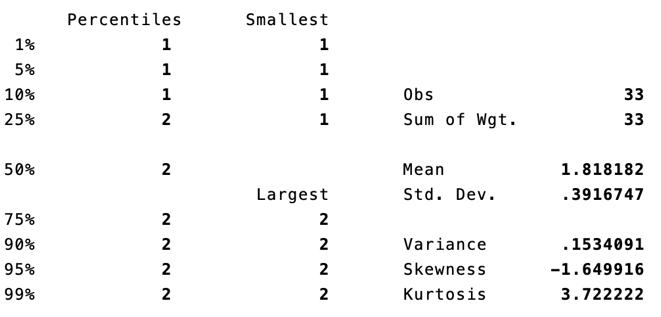
Figure 1: Descriptive data on gender
Gaining insights into the elderly’s health conditions, the researcher found that most of the 33 participants had a general or a little above general health condition (1 represents very healthy, 2 represents relatively healthy, 3 represents okay health condition, 4 represents poor health condition). Details are shown in the bar graph, which clarifies that 5 are very healthy, 11 are relatively healthy, 15 are okay, and 2 are not very healthy.
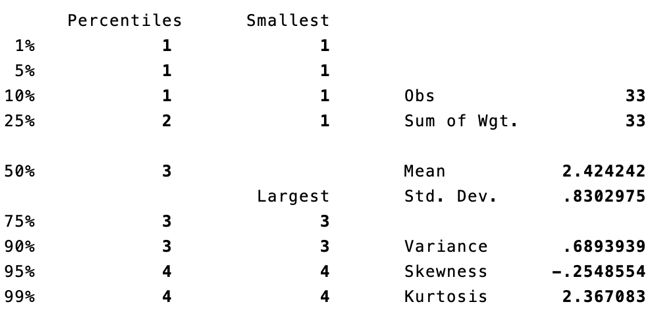
Figure 2: Descriptive data on health conditions
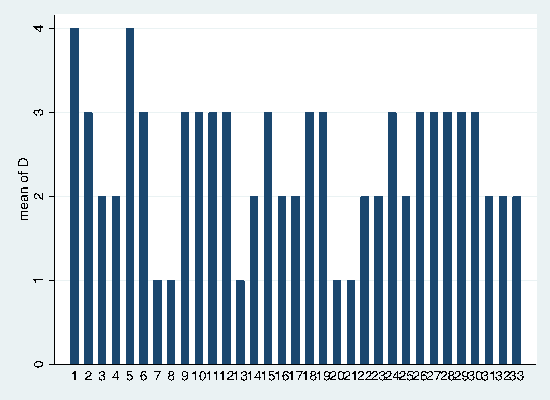
Figure 3: Bar chart on health conditions
When it comes to the elderly’s age, since the researcher defined “the elderly” to be people aged 60 or older, participants categorized as the elderly group all adhere to this trait and have a median of 72 and a mean of approximately 70.5. More information can be obtained through remaining descriptive data and the histogram, in which the distribution of the age groups in five-year intervals can be shown precisely.
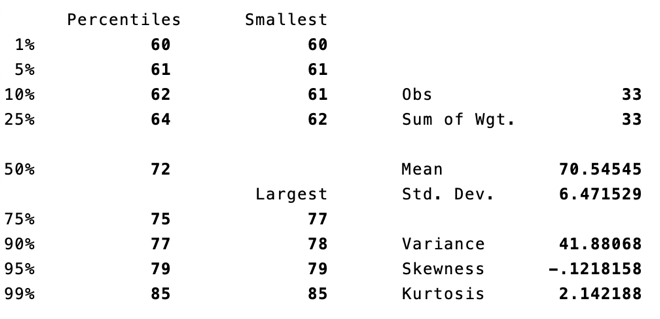
Figure 4: Descriptive data on age
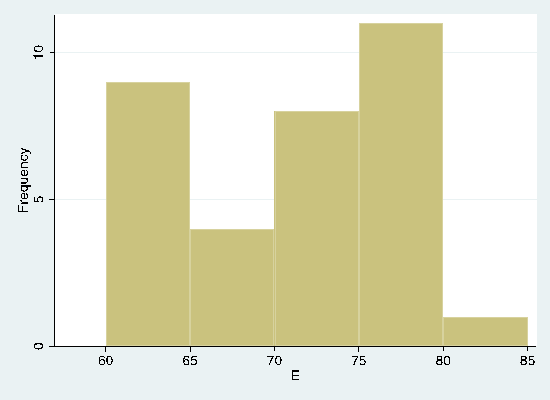
Figure 5: Histogram on age distribution
The following chart displays the elderly sample’s education level: 1 refers to having never been to school; 2 refers to graduated from primary school; 3 refers to graduated from junior high school; 4 refers to graduated from high school, secondary school, or vocational high school; 5 refers to graduated from junior college; 6 refers to earned bachelor’s degree; 7 refers to graduated from graduate school.
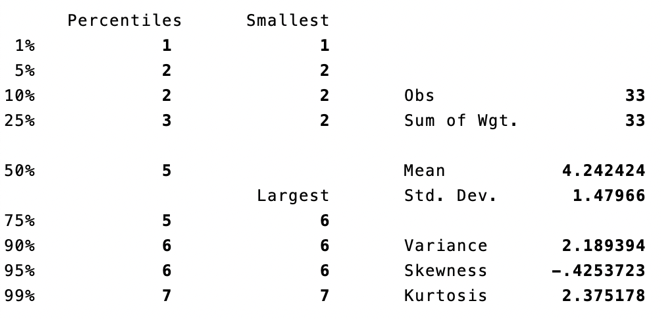
Figure 6: Descriptive data on education
The next variable measured is the average time in hours that the elderly spend on their phones each week (-3 can be neglected because it means unanswered). This might be one of the influencing factors in elderly online shopping.
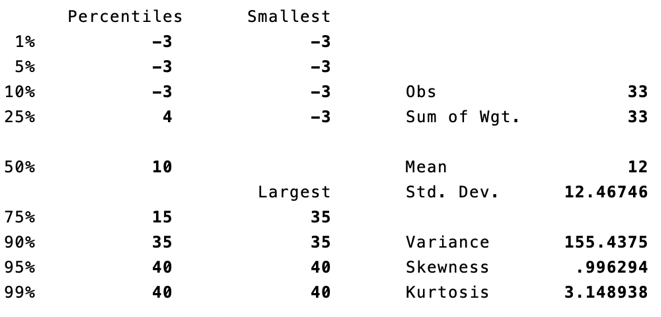
Figure 7: Descriptive data on average phone usage hours
The importance of phones to the elderly themselves may be another contributing factor as well. In this case, 1 represents great significance, 2 represents important, and 3 represents ordinary (-3 can be neglected because it means unanswered).
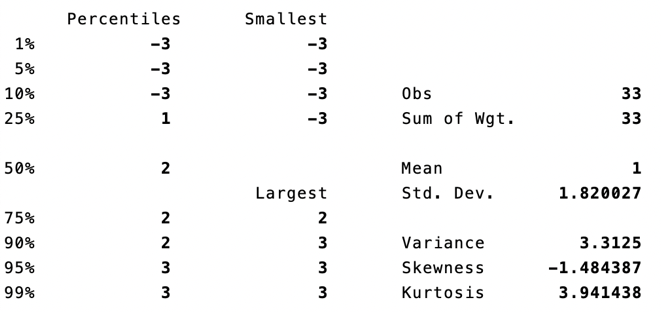
Figure 8: Descriptive data on the importance of phones
Then comes the frequency, or consumption habits of the elderly. In this question, 1 represents never shop online, 2 represents seldom shop online, 3 represents sometimes shop online, 4 represents often shop online, and 5 represents always shop online (-3 can be neglected because it means unanswered).
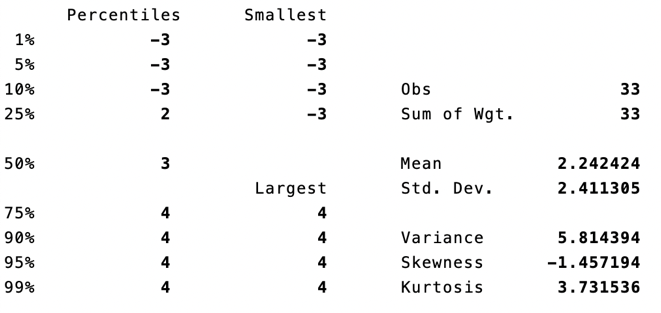
Figure 9: Descriptive data on online shopping frequency
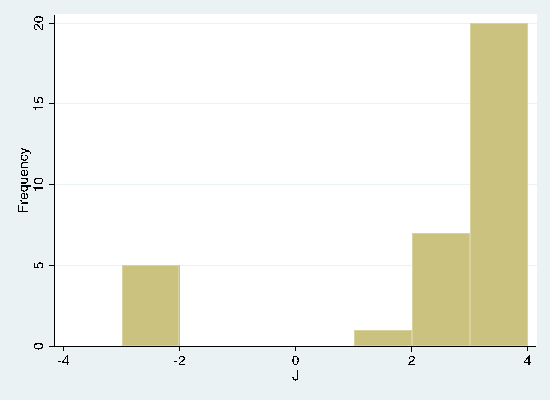
Figure 10: Histogram of online shopping frequency
The researcher also researched the amount of money that the elderly spent on online shopping in the last month. In the chart, 1 stands for less than 100 RMB, 2 stands for 100-300 RMB, 3 stands for 300-500 RMB, 4 stands for 500-1k RMB, 5 stands for 1k-3k RMB, 6 stands for over 3k RMB (-3 can be neglected because it means unanswered). It is shown in the chart that none of the elderly surveyed spent over 3k RMB online shopping last month.
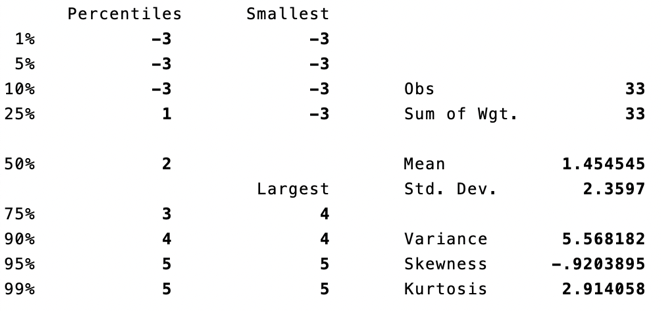
Figure 11: Descriptive data on the money spent in the past month
The frequency that the elderly shop online per week is an important reflection of their shopping amount as well. Categorizations include 1 for 1-5 times per week, 2 for 6-10 times per week, 3 for 11-20 times per week, and 4 for over 20 times. None of the elderly surveyed reported shopping over 20 times online per week, and the great majority of them shopped 1-5 times per week,
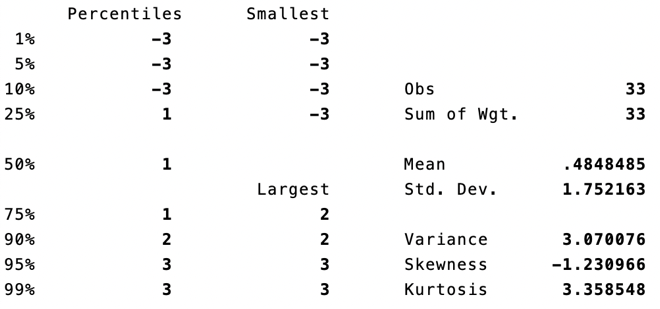
Figure 12: Descriptive data on online shopping times per week
This chart shows why the elderly chose to purchase a certain product, and the choices were designed based on different sales methods. It is evident that most elderly think the main reason for buying a product is having a practical need.
Table 11: Data on the reason for product selection
Option | Subtotal | Ratio | Attracted by product advertisement | 6 | 22.22% | Saw product/brand promotions on online shopping platforms | 9 | 33.33% | Attracted by discounts, raffles, or giveaways | 6 | 22.22% | Saw promotions of the product on non-online shopping platforms | 4 | 14.81% | Practical need for the product | 21 | 77.78% | Total Valid Samples | 27 | 100% |
What follows is the possibility of the elderly leaving a comment on the commodity after purchasing. Specifically, 1 means the elderly leave a comment every time, 2 means very often, 3 means sometimes, 4 means occasionally, 5 means never, and 6 means only when he or she is dissatisfied with the product (-3 can be neglected because it means unanswered).
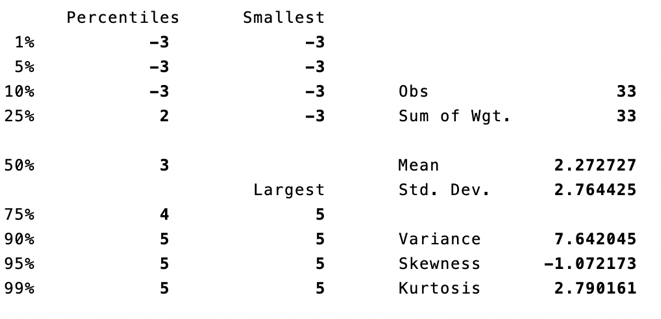
Figure 13: Data on the possibility of commenting after purchase
Whether the elderly will return or exchange the goods when dissatisfied was also taken into account. Among the numbers, 1 refers to always returning the good no matter how much the price is, 2 refers to only returning the good when it’s expensive, 3 refers to not returning the goods, feeling that the returning process is too complicated, 4 refers to not returning the goods, feeling that the returning fee is too high, 5 refers to not returning the goods, fearing to run into conflict with the seller, and 6 refers to not returning the goods, fearing being cheated during the return process (-3 can be neglected because it means unanswered).
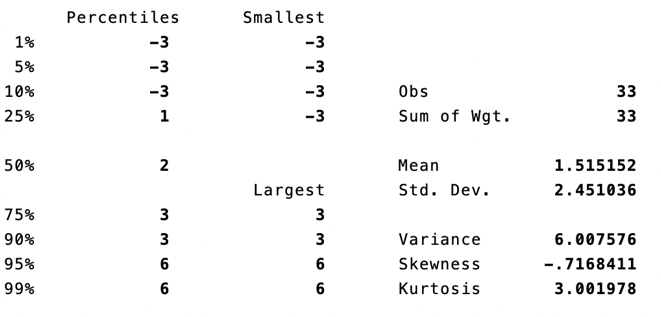
Figure 14: Data on whether the elderly would return dissatisfied goods
Lastly, the researcher investigated the income of the elderly now, including bank interest, insurance, and so on. The numbers indicate different levels of income, with 1 representing below 500 RMB, 2 representing between 500 to 1k RMB, 3 representing 1k to 3k RMB, 4 representing between 3k to 5k RMB, 5 representing 5k to 20k RMB, 6 representing 20k to 50k RMB, 7 representing 50k to 100k RMB, and 8 representing over 100k RMB (-3 can be neglected because it means unanswered). Of all the elderly surveyed, none reported an income above 20k RMB.
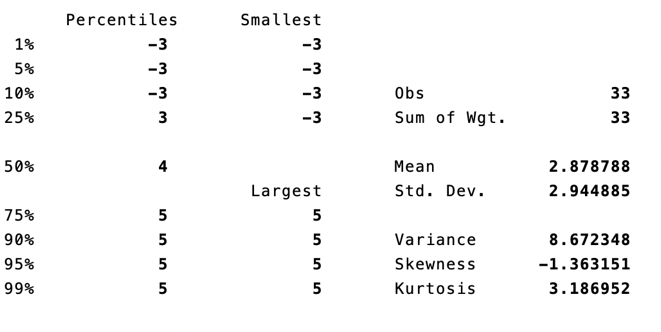
Figure 15: Data on the income level of the elderly
5. Conclusion
Based on what has been discussed above, the researcher has come to the following conclusions. Firstly, based on the elderly’s self-evaluations, among all sales methods, the effectiveness of elderly online shopping from high to low is sequentially public relations, online advertising, sales promotion, and site promotion. Among all sales platforms, the most used platforms by the elderly are successively Taobao, Jingdong, TikTok, Kuaishou, Xiaohongshu, and Bilibili. Secondly, based on the data from the son and daughter generation, among all sales methods, the effectiveness of elderly online shopping from high to low is sequentially sales promotion, public relations, online advertising, and site promotion. Among all sales platforms researched, the most used platforms by the elderly are successively TikTok, Jingdong, Kuaishou, Taobao, Bilibili, and Xiaohongshu. Lastly, based on the data from the grandson and granddaughter generation, among all sales methods, the effectiveness of elderly online shopping from high to low is sequentially sales promotion, online advertising, public relations, and site promotion. Among all sales platforms, the most used platforms by the elderly are successively Taobao, Jingdong, TikTok, Kuaishou, Xiaohongshu, and Bilibili.
References
[1]. Chen Xiqiong, Wu Yongtao, Chen Jun. Research status and implications of China's population aging in the past 10 years [J]. Yunnan Geographic Environment Research, 2023, 35(4): 59-66,72. DOI: 10.3969/j.issn.1001- 7852.2023.04.008.
[2]. Shen Feichao, Diao Weixue. Research on the influence of online promotion on purchasing behavior [J]. China Collective Economy,2020(6):77-78.
[3]. Cui Fasheng. A study on Users' participation Intention in online reviews from the perspective of Self-attribution [D]. Guangxi: Guilin University of Technology,2019. DOI:10.7666/d.D01818470.
[4]. Li Na. The Influence of information attribute and social attribute of online Q&A of e-commerce on consumers' purchase intention [D]. Shaanxi: Xidian University,2020.
[5]. Ruan Shihua. A study on the influencing factors of consumers' willingness to buy electronic products online -- A case study of Hanoi, Vietnam [D]. Jiangsu: Yangzhou University,2020.
[6]. Tian Zhenshi. A study on the impact of consumers' online shopping failure on their attitudes towards return, exchange, and online shopping [D]. Hubei: Central China Normal University, 2015.
[7]. Gu Tianyu, Lu Zhangping, Su Wencheng, et al. Research on the influence mechanism and Countermeasures of the digital ability of online Shopping of elderly groups from the perspective of multiple factors [J]. Scientific Research on Aging,2023,11(2):61-78. (in Chinese) DOI:10.3969/j.issn.2095-5898.2023.02.007.
[8]. Yan Zhonghua, Li Binning, Miganing, et al. An empirical research on the trust model for e-commerce in China [J]. Research of Technology Economics and Management,2008,159(4):3-6. (in Chinese) DOI:10.3969/j.issn.1004-292X.2008.04.001.
[9]. Chen Yue. Research on Gender differences in Internet product use behavior of Internet users [D]. Heilongjiang: Harbin Institute of Technology,2015. DOI:10.7666/d.D01102747.
Cite this article
Wang,L. (2024). How Sales Methods and Platforms Affect Elderly Online Shopping: The Patterns and Causes. Advances in Economics, Management and Political Sciences,122,216-231.
Data availability
The datasets used and/or analyzed during the current study will be available from the authors upon reasonable request.
Disclaimer/Publisher's Note
The statements, opinions and data contained in all publications are solely those of the individual author(s) and contributor(s) and not of EWA Publishing and/or the editor(s). EWA Publishing and/or the editor(s) disclaim responsibility for any injury to people or property resulting from any ideas, methods, instructions or products referred to in the content.
About volume
Volume title: Proceedings of the 8th International Conference on Economic Management and Green Development
© 2024 by the author(s). Licensee EWA Publishing, Oxford, UK. This article is an open access article distributed under the terms and
conditions of the Creative Commons Attribution (CC BY) license. Authors who
publish this series agree to the following terms:
1. Authors retain copyright and grant the series right of first publication with the work simultaneously licensed under a Creative Commons
Attribution License that allows others to share the work with an acknowledgment of the work's authorship and initial publication in this
series.
2. Authors are able to enter into separate, additional contractual arrangements for the non-exclusive distribution of the series's published
version of the work (e.g., post it to an institutional repository or publish it in a book), with an acknowledgment of its initial
publication in this series.
3. Authors are permitted and encouraged to post their work online (e.g., in institutional repositories or on their website) prior to and
during the submission process, as it can lead to productive exchanges, as well as earlier and greater citation of published work (See
Open access policy for details).
References
[1]. Chen Xiqiong, Wu Yongtao, Chen Jun. Research status and implications of China's population aging in the past 10 years [J]. Yunnan Geographic Environment Research, 2023, 35(4): 59-66,72. DOI: 10.3969/j.issn.1001- 7852.2023.04.008.
[2]. Shen Feichao, Diao Weixue. Research on the influence of online promotion on purchasing behavior [J]. China Collective Economy,2020(6):77-78.
[3]. Cui Fasheng. A study on Users' participation Intention in online reviews from the perspective of Self-attribution [D]. Guangxi: Guilin University of Technology,2019. DOI:10.7666/d.D01818470.
[4]. Li Na. The Influence of information attribute and social attribute of online Q&A of e-commerce on consumers' purchase intention [D]. Shaanxi: Xidian University,2020.
[5]. Ruan Shihua. A study on the influencing factors of consumers' willingness to buy electronic products online -- A case study of Hanoi, Vietnam [D]. Jiangsu: Yangzhou University,2020.
[6]. Tian Zhenshi. A study on the impact of consumers' online shopping failure on their attitudes towards return, exchange, and online shopping [D]. Hubei: Central China Normal University, 2015.
[7]. Gu Tianyu, Lu Zhangping, Su Wencheng, et al. Research on the influence mechanism and Countermeasures of the digital ability of online Shopping of elderly groups from the perspective of multiple factors [J]. Scientific Research on Aging,2023,11(2):61-78. (in Chinese) DOI:10.3969/j.issn.2095-5898.2023.02.007.
[8]. Yan Zhonghua, Li Binning, Miganing, et al. An empirical research on the trust model for e-commerce in China [J]. Research of Technology Economics and Management,2008,159(4):3-6. (in Chinese) DOI:10.3969/j.issn.1004-292X.2008.04.001.
[9]. Chen Yue. Research on Gender differences in Internet product use behavior of Internet users [D]. Heilongjiang: Harbin Institute of Technology,2015. DOI:10.7666/d.D01102747.









